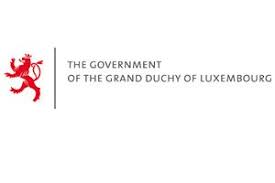1.1. Initiate dialogue on the need for a PEFA assessment
Dialogue on the need for a PEFA assessment is normally considered the starting point of the PEFA assessment process. Such a dialogue often evolves from a discussion of the need to improve PFM systems, which may be part of a broader PFM or public administration reform program or strategic partnership arrangements with development partners. The dialogue may also be the result of an internal discussion within government or between government and development partners and/or civil society organizations/representatives. The members the dialogue team may be considering a PEFA assessment for the first time to set a baseline or they may be considering the need for a current assessment to follow one or more assessments completed in previous years.
Given the extensive time and resources required for a PEFA assessment and the need to gain wide acceptance among stakeholders, the decision to undertake a PEFA assessment is best made at a senior operational level within the government such as the prime minister’s office or the office of the minister of finance.
Standard procedures and governance arrangements of stakeholders financing or managing PEFA assessments may differ from the approach proposed in this guidance but it is important to ensure that the main elements of the process described below are covered. If they are not, it may be prudent to incorporate the missing elements.
1.2. Establish an oversight team
Following the decision to undertake an assessment, an oversight team should be established. The oversight team is a reference group, with members drawn from the leading government entity in the assessment, typically the ministry of finance, and from other government and non-government stakeholders, including the supreme audit institution,
and key development partners. The oversight team effectively plays the central governance role in the assessment process. It directs the assessment, monitors progress and addresses any issues of policy, communication with other stakeholders and access to data, information or institutions that may arise throughout the assessment process.
The Oversight Team may be an existing interdepartmental body such as a PFM Reform Steering Committee, which has a continuing role to improve PFM, and whose existence is not limited to the PEFA assessment, or any single PFM project.
OVERSIGHT TEAM MEMBERSHIP AND RESPONSIBILITIES
The oversight team is usually chaired by the lead stakeholder. It is recommended that this be a senior government representative, for example, ministry of finance, but may also be another body such as the supreme audit institution.
The initial task of the oversight team is to approve the concept note or ToR which will set out the agreed purpose, scope, justification, management arrangements and roles of various stakeholders as well as the financing of the assessment. It is recommended that the oversight team also facilitate the process of PFM reform dialogue and planning following the completion of the assessment.
ASSESSMENT MODELS
In general, assessments are usually undertaken through one of three assessment models:
- a self-assessment undertaken by the government, with arrangements for independent validation. This involves the government initiating the assessment and appointing the oversight team, assessment manager and team leader. Members of the assessment team may include seconded government officials, and/or local and international experts recruited by the government.
PEFA Handbook Volume 1: The PEFA Assessment Process – Planning, Managing and Using PEFA





